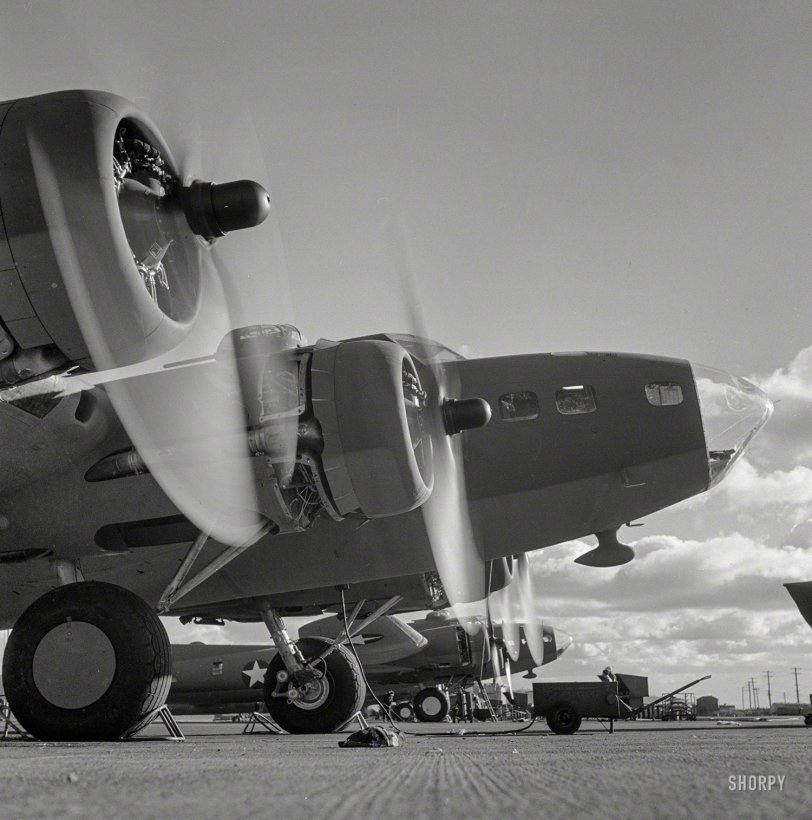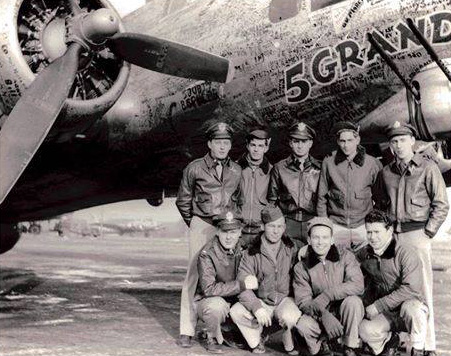


Framed or unframed, desk size to sofa size, printed by us in Arizona and Alabama since 2007. Explore now.
Shorpy is funded by you. Patreon contributors get an ad-free experience.
Learn more.

- Heckuva remote control!
- Sometimes — Things Go Bump!
- I SEE THE LIGHT
- Union Switch and Signal Company
- Get That Light Out Of My Eyes
- Eggs. Eggs. Eggs. The Egg Man is Here!
- Foreboding caption
- Famous Hollywood faces
- Not just S&P
- re: Those things in the jar
- Up In Smoke
- Medical Smoking
- Quick fix
- A Quink Comment
- If You’re Like Me, Never
- Delivering the News
- U.S.A.
- S&P
- 1940 Zenith radio model 6G601
- Quality goes in before the name goes on!
- Snazzy skirt
- Carbon Arc Lamps
- Illuminate us
- I remember it well
- I can't prove it
- Complicated then, forgotten now
- Bryan-Stevenson
- Skinny is as skinny does
- How do you rest in peace
- Riding the footboards
Print Emporium
Warship of the Air: 1942

December 1942. "Production. B-17 heavy bomber. The four mighty engines of a new B-17F (Flying Fortress) bomber warm up at the airfield of Boeing's Seattle plant as another warship of the air awaits its flight test. The Flying Fortress has performed with great credit in the South Pacific, over Germany and elsewhere. It is a four-engine heavy bomber capable of flying at high altitudes." Photo by Andreas Feininger for the Office of War Information. View full size.
The 5 Grand and my dad
My dad, St.Sgt. Johnny Wearing, born 1925 in Detroit and still living there at 93, was the tailgunner on this plane. The plane was called the 5 Grand and my dad was in the first combat crew to fly 35 missions on her. Dad is in the front row on knees far right. He graduated high school in June of 1944 and was in the tail performing missions in September. Sincerely, Rick Wearing, Warren, Michigan.

No Disc Brakes
The B-17 did not have disc brakes. I currently fly as a crew member on the B-29 FIFI operating from Meacham Field in Fort Worth. The B-29, B-24 and B-17 all have expander tube brakes. We in the warbird organizations share brakes when we need to because they are hard to find parts for them.
Still had some art-deco lines
This version of the B-17 still had some of the elegant, Gernsback-ish lines of the prototype B-17's. Later models would get more guns, more antennas and more kit bolted on and the clean lines losts. The B-17 would be much less pretty, but much more effective.
Factory equipped
with turbo-superchargers and disc brakes. "Capable of flying at high altitudes" is right---as much as 40,000 feet!
But remember, these aircraft were unheated and unpressurized. Fleece-lined flight suits and gloves with electric heating were worn against the extreme sub-zero temperatures, and oxygen for your mask came from a manifold fed by bottles mounted on the bulkheads.
And the only thing between you and enemy fire or flak was a dime-thick skin of aluminum!
Rugged?
And quite fragile looking in some places. For instance, aileron hinge pin diameters of not even 1/2", if I recall correctly what I have once seen on a dressed-down B-17 at Meachum Field in Fort Worth.
Regarding the B-17
Wonderful picture.
I volunteer at a vintage aircraft museum. I've had the opportunity to fly as a paying passenger on a vintage B-24, and to tour a couple of B-17s (on the ground).
I know planes and piloting to a certain extent, and have heard and picked up this information from the old timers at the museum, and from the internet:
The B-17 was more robust, damage resistant, and more likely to get their crews back to the base after incurring often horrific battle damage.
The B-24 was faster, had a larger bomb capacity, and played more versatile roles in the war.
Lots of debate among vintage aviation buffs on this one. One thing is beyond debate..the bravery of those young guys who were up there in the very, very wild blue yonder.
Early model
Early production with few forward firing guns.
The Memphis Belle was one
A rugged, dependable aircraft
























On Shorpy:
Today’s Top 5